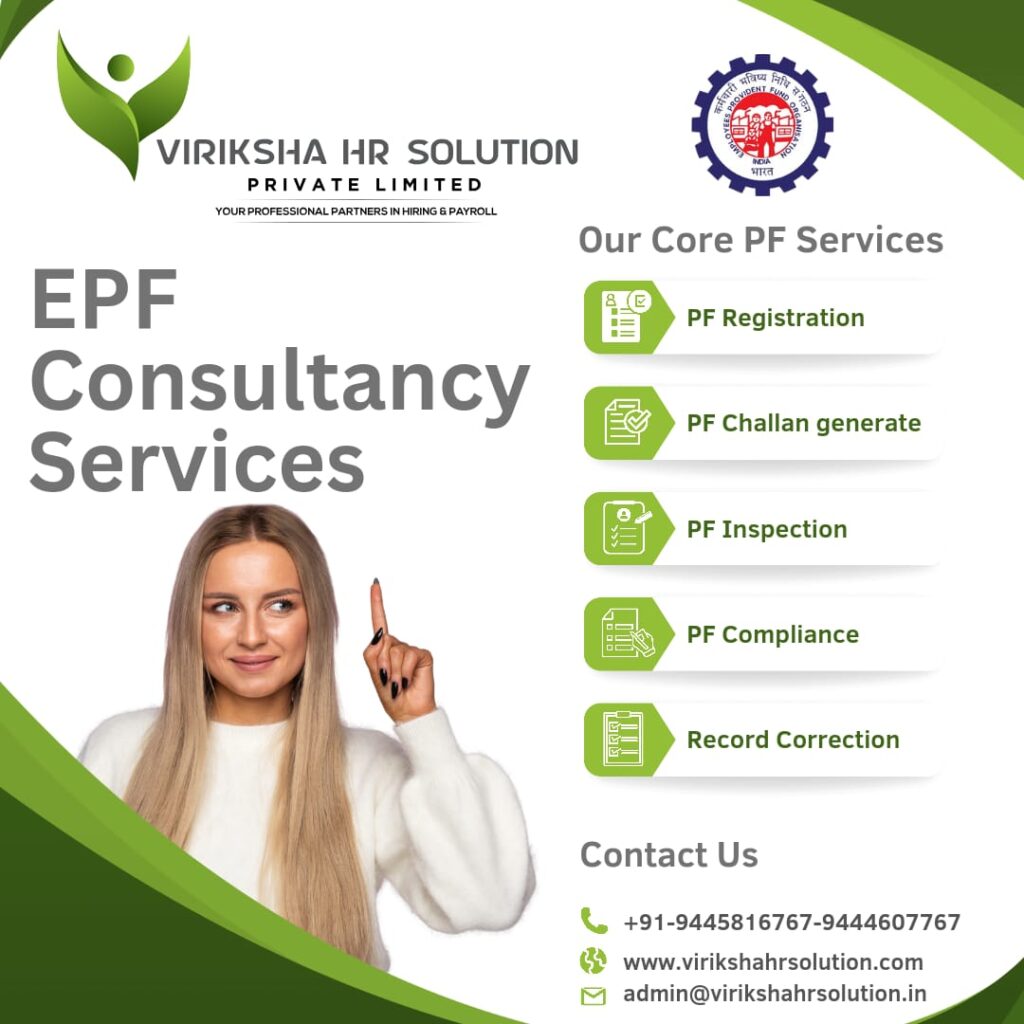Creating a Winning Employer Brand: Attracting and Retaining Top No:1 Talent
In today’s highly competitive job market, the importance of a strong employer brand cannot be overstated. Employer branding is essentially about how your organization is perceived by potential employees and the wider world. It plays a critical role in attracting and retaining top talent—a must for any business looking to thrive. At Viriksha HR Solutions, we’ve seen firsthand the transformative power of a well-crafted employer brand. This comprehensive guide will explore the essential steps to creating a winning employer brand that attracts and retains the best in the business. “Explore top-tier HR solutions in Chennai with services including Recruitment and Staffing, Employee Onboarding, Training and Development, Performance Management, Compensation and Benefits, Compliance and Risk Management, Employee Relations, HR Strategy and Consulting, HR Technology Implementation, and Outsourcing Services.”

Understanding Employer Branding
Employer branding is the process of promoting a company, or an organization, as the employer of choice to a desired target group, one which a company needs and wants to recruit and retain. The essence of a strong employer brand lies in its ability to reflect the values, culture, and mission of your organization, making it an attractive place to work for potential employees.
The Impact of Strong Employer Branding
Attracting Top Talent: In a competitive job market, top candidates often have their choice of potential employers. A strong employer brand can differentiate your company from competitors.
Reducing Hiring Costs: Companies with positive employer brands tend to spend less on recruiting efforts because their brand does the heavy lifting for them.
Improving Retention Rates: When employees feel aligned with the values and vision of an organization, they are more likely to stay long-term. This reduces turnover and the associated costs of hiring and training new staff.

Building Company Culture: A robust employer brand helps in cultivating a positive and productive workplace culture that can boost employee morale and performance.
Enhancing Business Performance: Companies with strong employer brands often report better overall business performance, as they are powered by motivated, committed employees.
Step 1: Define Your Unique Value Proposition (UVP)
The first step in crafting your employer brand is defining your Unique Value Proposition (UVP). This involves identifying what makes your company unique and appealing as a workplace. Consider factors such as your company culture, benefits, career development opportunities, and work-life balance offerings.
How to Define Your UVP
Employee Feedback: Conduct surveys or focus groups with current employees to understand what they value most about working for your company.
Leadership Insights: Engage with leadership to capture their vision for the company and how they see its culture and values.
Competitor Analysis: Review what competitors are offering to identify what sets your company apart.
Step 2: Communicate Your Brand
Once you’ve defined your UVP, the next step is to communicate this effectively both internally and externally. This means ensuring that your branding is consistent across all platforms and touchpoints.
Channels to Leverage
Career Page: This should reflect your employer brand and include testimonials, benefits, and insights into the company culture.
Social Media: Platforms like LinkedIn, Twitter, and Facebook can be used to showcase your company culture and broadcast news.
Content Marketing: Publish articles, blogs, and videos that highlight your company’s achievements, culture, and more.

Step 3: Engage Employees as Brand Ambassadors
Your employees are your best brand ambassadors. Encourage them to share their positive experiences at work on their social media platforms, and with friends and family.
How to Engage Employees
Employee Referral Programs: Offer incentives for employees who refer candidates who get hired.
Social Media Sharing Kits: Provide content that employees can easily share on their personal online platforms.
Employee Testimonials: Use real stories from your employees about why they love working for your company in your marketing materials.
Step 4: Monitor and Evolve Your Brand
Employer branding is not a set-it-and-forget-it part of your strategy. It needs to evolve as your company grows and as market dynamics change.
Tools and Metrics for Monitoring
Employer Branding Surveys: Regularly survey potential and current employees to gauge brand perception.
Social Media Analytics: Use tools to track engagement and sentiment on social platforms.
Employee Retention Rates: Keep an eye on turnover rates as an indirect measure of how well your employer brand resonates with staff.
Step 5: Align HR and Marketing
For an employer brand to be truly effective, your HR and marketing departments must work closely together. This alignment ensures consistent messaging and maximizes the impact of your branding efforts.
Conclusion
Building a compelling employer brand is a vital strategy for any organization looking to attract and retain the best talent. By defining your unique value proposition, effectively communicating it, engaging your employees as brand ambassadors, monitoring your brand, and aligning your HR and marketing efforts, you can create a strong and appealing employer brand. At Viriksha HR Solutions, we are committed to helping you achieve these goals, ensuring your company stands out as a premier place to work.
Step 6: Foster Inclusivity and Diversity
Embracing diversity and promoting inclusivity in the workplace isn’t just about compliance or social responsibility—it’s a strategic advantage. Diverse teams bring varied perspectives that can drive innovation and enhance decision-making.
Actions to Promote Diversity and Inclusivity:
Inclusive Job Descriptions: Use language that is inclusive and welcoming to all demographics.
Diverse Hiring Panels: Include diverse members in the recruitment process to eliminate biases and promote equality.
Support Networks and Groups: Encourage the formation of employee groups that support diversity (e.g., networks for women, LGBTQ+ employees, etc.).
Step 7: Implement Effective Onboarding Processes
The onboarding experience is a critical touchpoint in the employee journey. A positive onboarding experience can significantly impact new hire retention and engagement.

Tips for Effective Onboarding:
Structured Onboarding Program: Develop a comprehensive program that gradually introduces new hires to the company culture, processes, and their role.
Mentorship Programs: Pair new hires with experienced mentors to guide them through their first months.
Feedback Mechanisms: Regularly gather feedback from new hires to improve the onboarding process continuously.
Step 8: Enhance Employer Brand through Corporate Social Responsibility (CSR)
Today’s workforce, especially millennials and Gen Z, often evaluate potential employers based on their ethical stance and contribution to societal issues.
Ways to Integrate CSR:
Community Engagement: Engage in community service and support local initiatives, encouraging employee participation.
Sustainability Practices: Adopt and promote sustainable business practices.
Ethical Business Operations: Ensure that your business practices uphold high ethical standards.
Step 9: Leverage Technology to Enhance Brand Visibility
In a digital world, the right technology can amplify your employer branding efforts, making your company more visible and attractive to potential candidates.
Technological Tools to Consider:
Employer Branding Software: Tools like Glassdoor, LinkedIn, and Universum offer platforms for enhancing employer brand visibility.
Social Media Tools: Use scheduling and analytics tools to maintain a strong presence and gather insights on engagement.
Video Marketing: Create engaging video content that showcases your company’s work environment, culture, and employee testimonials.
Step 10: Develop a Strong Employee Value Proposition (EVP)
An Employee Value Proposition (EVP) is an employee-centric approach that reflects the values, opportunities, and benefits your company offers. A compelling EVP is crucial for attracting candidates whose values align with your company’s.

Elements of a Strong EVP:
Compensation and Benefits: Ensure your offerings are competitive and aligned with industry standards.
Professional Development: Highlight opportunities for growth and learning within the company.
Work Environment: Promote your company’s work culture and environment as supportive and conducive to personal and professional growth.
Step 11: Consistent Evaluation and Rebranding
As markets and employee expectations change, so should your employer brand. Regular evaluations ensure that your brand remains relevant and appealing.
Strategies for Continuous Improvement:
Brand Audits: Conduct regular audits to assess the health and effectiveness of your employer brand.
Stay Current on Trends: Keep abreast of the latest trends in employer branding and HR to ensure your strategies remain cutting edge.

Adapt to Feedback: Be responsive to the feedback from employees and job applicants to refine and adjust your employer branding strategies.
Conclusion
Enhancing your employer brand is a dynamic and ongoing process that requires commitment and adaptability. By implementing these comprehensive steps and continually refining your approach based on the changing landscape and feedback, your organization can build a strong employer brand. This not only attracts top talent but also fosters a committed and satisfied workforce, driving your company’s success well into the future.
At Viriksha HR Solutions, we understand the nuances of building a robust employer brand and are here to guide you through every step of this rewarding journey.
Step 12: Cultivate a Culture of Recognition
Creating a culture where employee contributions are consistently recognized can significantly enhance job satisfaction and, by extension, strengthen your employer brand.
Ways to Cultivate Recognition:
Employee Recognition Programs: Develop programs that regularly acknowledge employee achievements, both big and small.
Peer-to-Peer Recognition: Encourage a culture where employees can recognize each other’s contributions, which fosters camaraderie and a positive work environment.
Public Acknowledgment: Use internal newsletters, social media, and other communication channels to highlight employee successes.
Step 13: Offer Flexible Working Conditions
As work-life balance becomes a priority for many employees, offering flexible working conditions can make your company more attractive.
Implementing Flexibility:
Remote Work Options: Allow employees to work from home full-time or a few days a week.
Flexible Hours: Offer options like flextime, where employees can choose their start and end times within a set range.
Compressed Workweeks: Enable employees to work longer hours on fewer days, giving them more consecutive days off.
Step 14: Invest in Employee Wellness Programs
Employee wellness programs demonstrate that you care about your employees’ health and well-being, which can enhance your employer brand.
Examples of Wellness Programs:
Health Screenings and Subscriptions: Offer free health screenings and subscriptions to wellness apps or gyms.
Mental Health Support: Provide access to mental health resources and services, such as counseling and stress management workshops.
Wellness Challenges: Organize wellness challenges with incentives to encourage healthy behaviors.

Step 15: Utilize Data Analytics to Improve Hiring Practices
Leveraging data analytics can improve how you attract and retain talent, making your recruitment process more efficient and effective.
Data-Driven Recruitment:
Applicant Tracking Systems (ATS): Use ATS to gather data on applicant sources, hiring efficiency, and candidate quality.
Employee Feedback Surveys: Regularly analyze employee feedback to identify strengths and weaknesses in your employer branding.
Predictive Analytics: Use predictive analytics to foresee hiring needs, turnover rates, and employee engagement levels.

Step 16: Promote Career Development Opportunities
Career development opportunities are a major draw for top talent. Showcasing clear paths for advancement within your organization can elevate your employer brand.
Promoting Career Development:
Training Programs: Offer in-house training programs or budget for external courses and workshops.
Career Pathing: Clearly outline potential career paths within the organization during the recruitment process and employee reviews.
Mentoring and Coaching: Establish mentoring programs that help employees grow professionally and personally.
Step 17: Strengthen Community and Social Engagement
An employer that actively engages with its community can enhance its brand by demonstrating a commitment to social responsibility.
Community Engagement Strategies:
Volunteer Programs: Create company-sponsored volunteer programs that encourage employees to give back to the community.
Partnerships: Partner with local or global charities, non-profits, or educational institutions.
Sponsorships: Sponsor local events, sports teams, or community initiatives, which can also provide networking opportunities for employees.

Step 18: Enhance Internal Communication
Strong internal communication ensures that employees feel informed, valued, and engaged, significantly impacting your employer brand from the inside out.
Improving Internal Communication:
Regular Updates: Keep employees regularly informed about company news, changes, and achievements through various channels like intranet, email newsletters, or town hall meetings.
Feedback Channels: Establish open channels for employee feedback, such as suggestion boxes, surveys, or regular one-on-one meetings with managers.
Transparent Leadership: Encourage leaders to communicate openly about the company’s challenges and successes, fostering a culture of transparency.
Conclusion
Expanding your approach to employer branding by incorporating these advanced strategies can significantly boost your attractiveness as a top employer. By focusing on recognition, flexibility, wellness, data-driven insights, career development, community engagement, and internal communication, you create a workplace environment that not only attracts but retains the very best talent. At Viriksha HR Solutions, we are dedicated to guiding and supporting your journey towards establishing an exemplary employer brand that stands out in today’s competitive market.
Talent Acquisition – Expertise in sourcing, recruiting, and onboarding top talent tailored to specific industry needs.
Employee Engagement – Strategies and programs designed to increase employee satisfaction and retention.
Workforce Analytics – Utilizing data to analyze workforce trends, predict needs, and guide strategic decisions.
Compliance and Risk Management – Ensuring that HR policies and practices comply with local and international laws.
Training and Development – Customized training programs to upskill employees and support their professional growth.
Performance Management – Systems to assess and enhance employee performance, aligning with company goals.
HR Strategy Consulting – Strategic advisement to optimize HR operations and align HR goals with business objectives.
Diversity and Inclusion – Programs and policies designed to create a more inclusive and diverse workplace.
Employee Benefits Management – Designing and managing employee benefits programs that attract and retain talent.
Change Management – Assisting organizations in managing organizational change and employee transition.
Leadership Development – Programs aimed at developing the next generation of leaders within the organization.
Outplacement Services – Support for employees transitioning out of the company, including career coaching and job search services.
HR Technology Implementation – Integrating the latest HR technologies to streamline processes and improve efficiency.
Labor Relations – Advising on union relations and negotiations, ensuring harmonious labor relations.
Compensation Planning – Strategic planning of compensation structures that motivate employees while aligning with market standards.
Recruitment and Staffing: Providing services related to hiring new employees, including sourcing, screening, interviewing, and placing candidates.
Employee Onboarding: Assisting companies with the integration of new hires into the organization, ensuring they understand their roles, responsibilities, and the company culture.
Training and Development: Offering various training programs to enhance employee skills, both for their current roles and future positions within the company.
Performance Management: Designing systems that help in evaluating and managing employee performance, including setting performance metrics, providing feedback, and conducting appraisals.
Compensation and Benefits: Advising on and helping to implement competitive compensation structures and benefits packages to attract and retain talent.
Compliance and Risk Management: Ensuring that company HR policies and practices comply with all laws and regulations to avoid legal risks.
Employee Relations: Managing the relationship between the employer and employees, resolving conflicts, and maintaining a positive work environment.
HR Strategy and Consulting: Offering strategic advice to align the HR function with the broader business goals of the organization.
HR Technology Implementation: Helping businesses choose and implement HR technology solutions that automate and streamline HR processes like payroll, benefits administration, and more.
Outsourcing Services: Taking over entire HR functions or specific tasks like payroll processing or background checks, allowing companies to focus on their core business activities.
